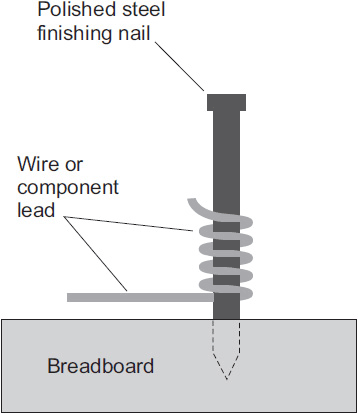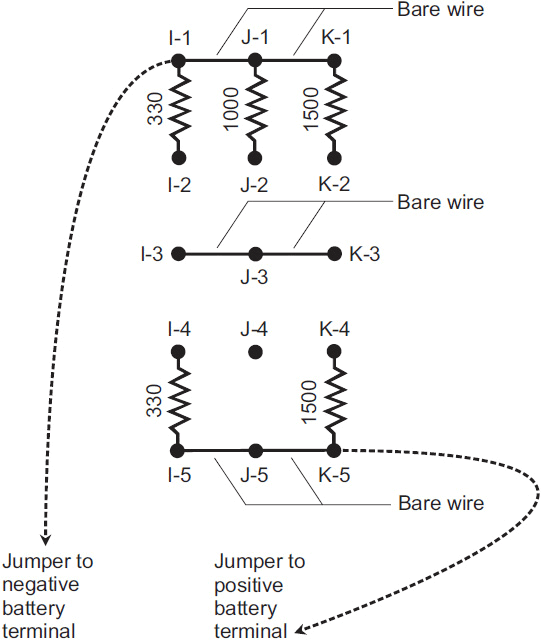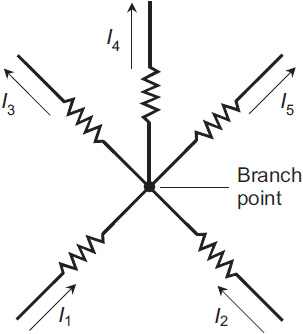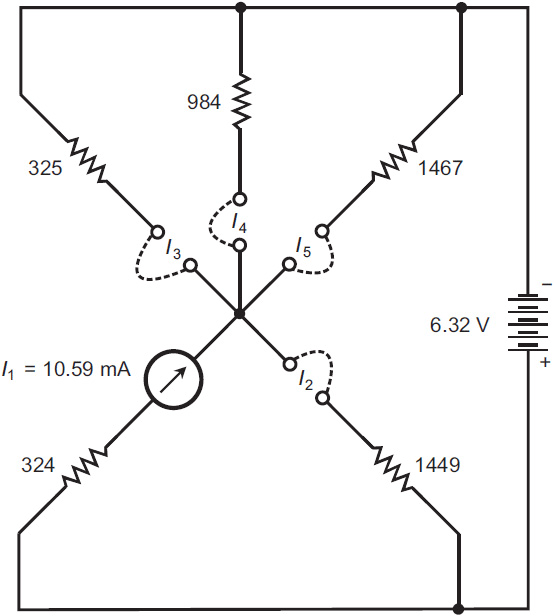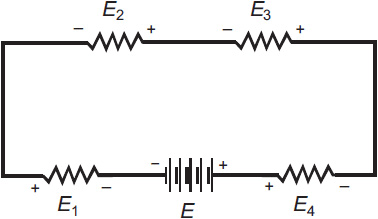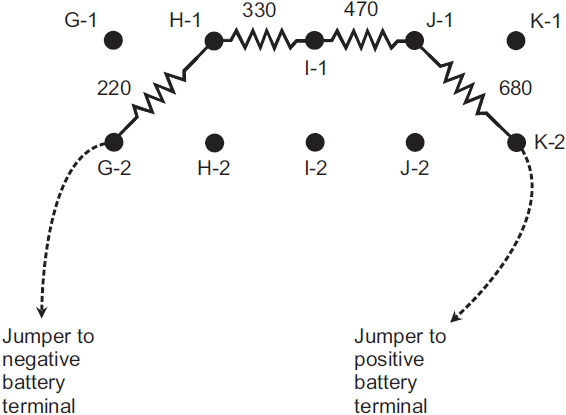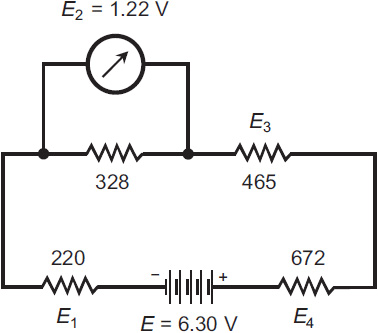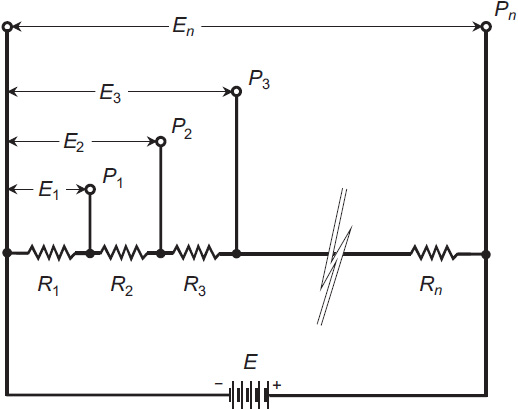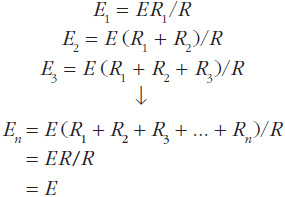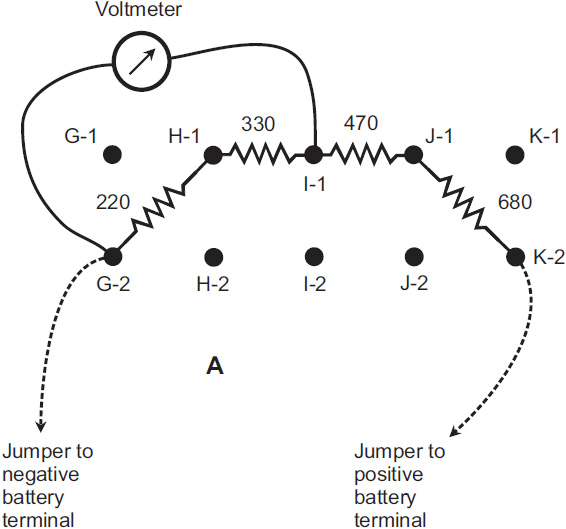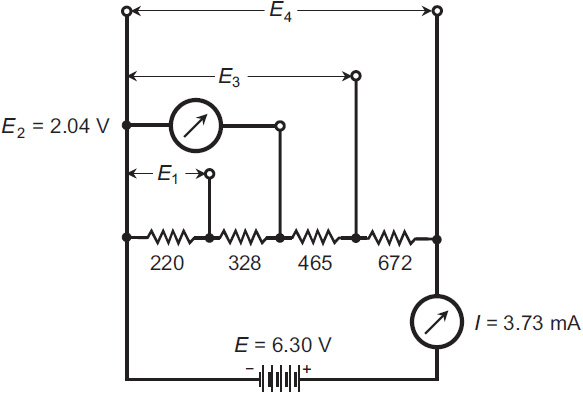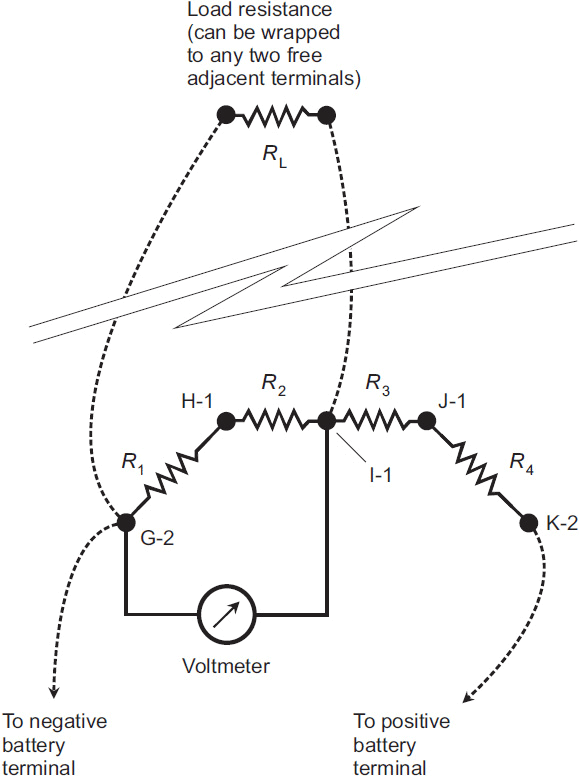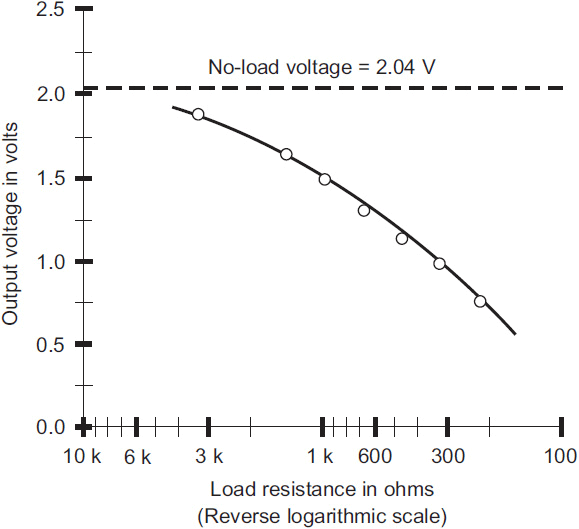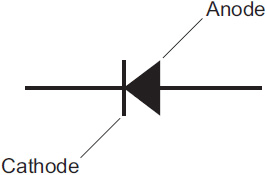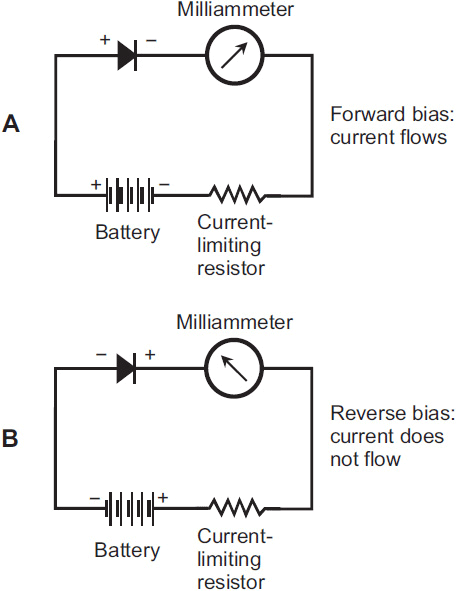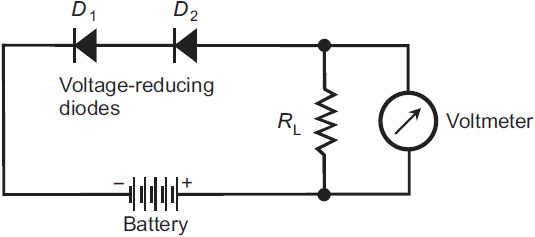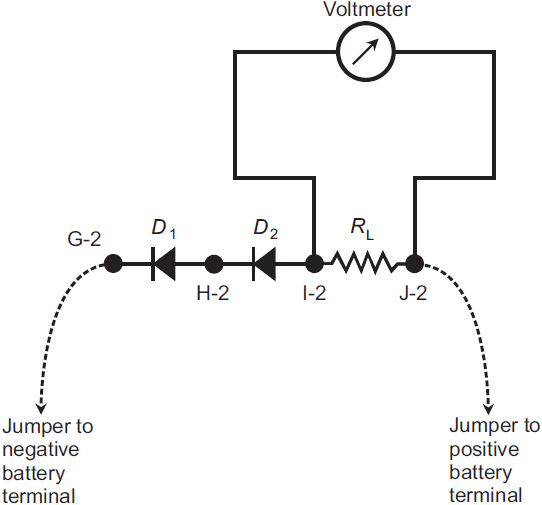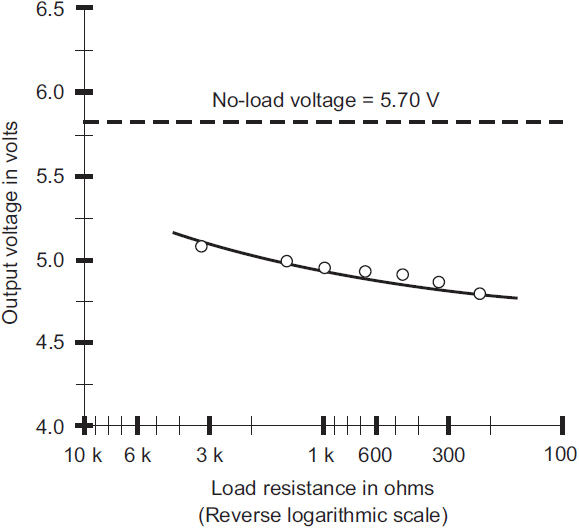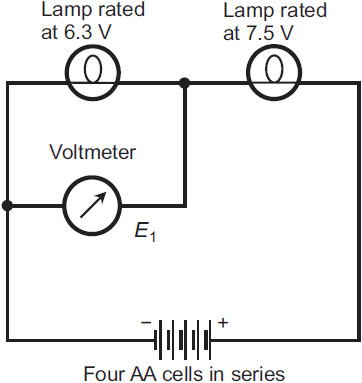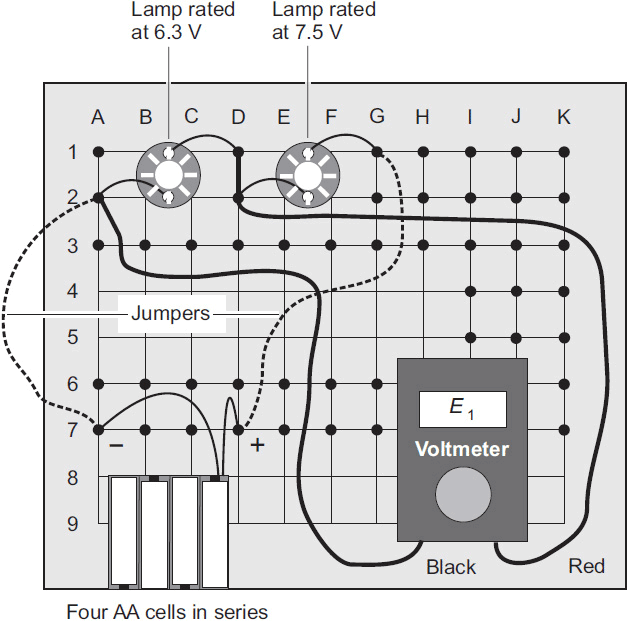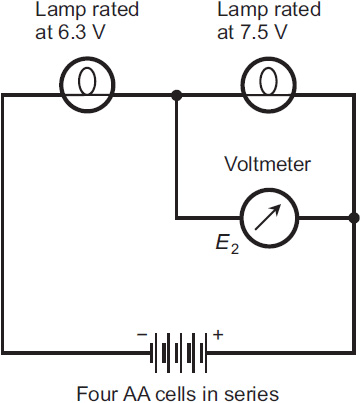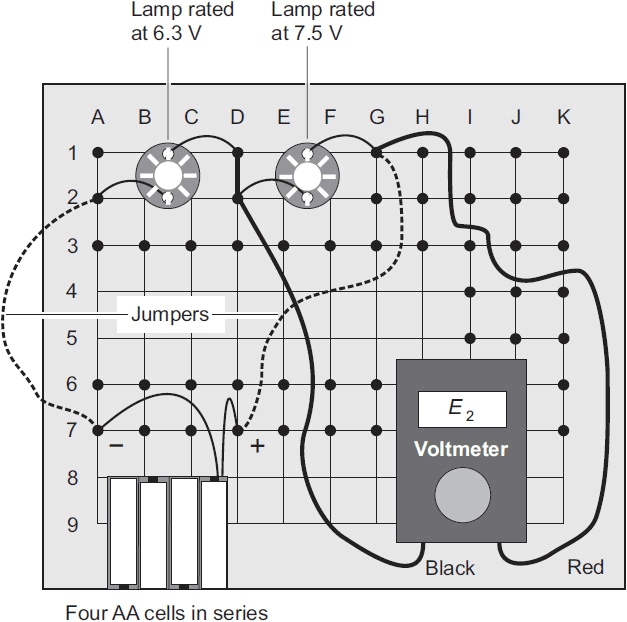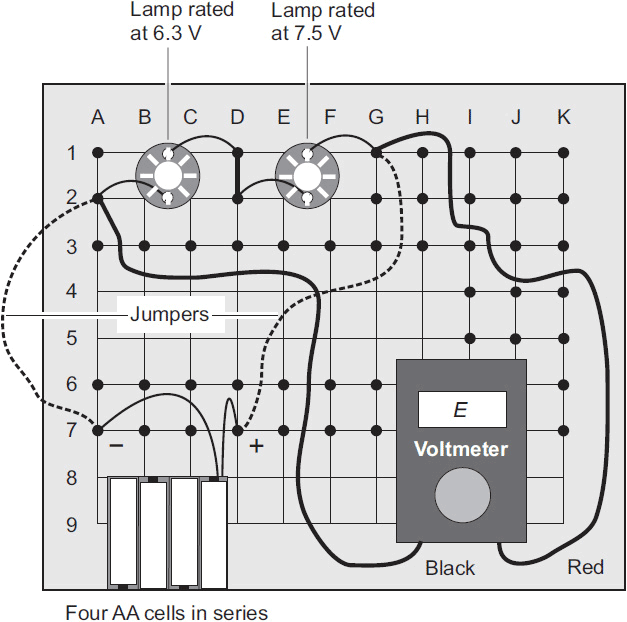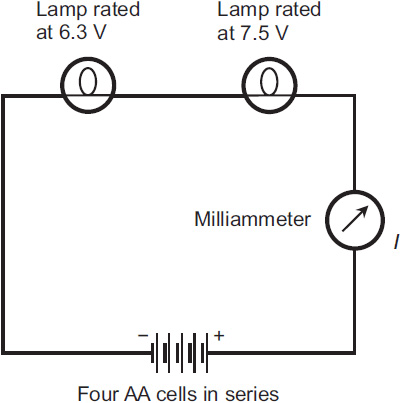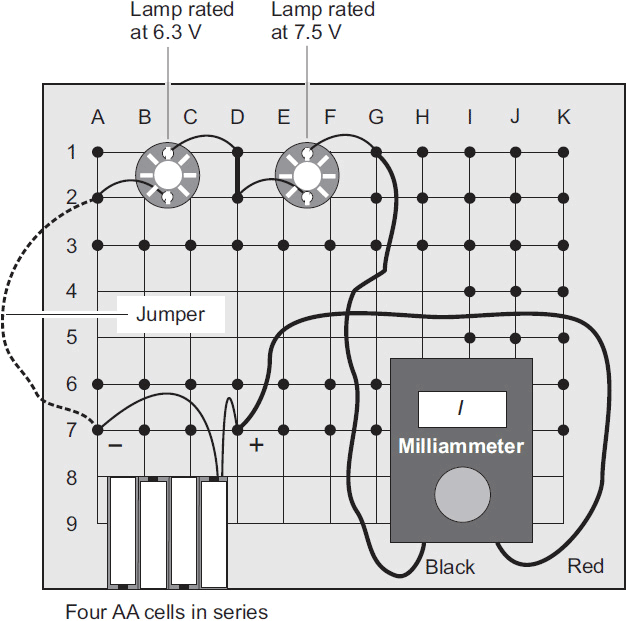6
Let’s learn by doing
Earlier in this book, I mentioned a volume called Electricity Experiments You Can Do at Home. In this chapter, I’ve adapted a few of the experiments from that book along with layouts and schematics. You should find these activities entertaining and informative in their own right. As you go, you’ll “automatically” bolster your proficiency in reading and interpreting schematics. Let’s start with some setup details, including a parts list and the construction of a simple circuit-testing board. Then, if you want, you can do the experiments here. If you enjoy them, then you can buy Electricity Experiments You Can Do at Home and do a whole lot more!
Tip
You don’t have to buy all the parts, build the breadboard, and do the experiments described here, if you aren’t in the mood. I think you’ll have more fun and learn things better that way, but if you don’t want to spend money and time on “nuts and bolts stuff,” you can learn a fair amount by simply following along and conducting the experiments in your imagination.
Your breadboard
Every experimenter needs a good workbench. Mine consists of a piece of plywood, weighted down over the keyboard of an old upright piano, and hung from the cellar ceiling by brass-plated chains. Yours doesn’t have to be that exotic, and you can put it anywhere as long as it won’t shake or collapse. The surface should be made of a nonconducting material such as wood, protected by a plastic mat or a small piece of close-cropped carpet (a doormat works great). A desk lamp, preferably the “high-intensity” type with an adjustable arm, completes the arrangement.
Before you begin any of the tasks described in this chapter, buy a good pair of safety glasses at your local hardware store. Wear the glasses at all times as you play around with the hardware. Get into the habit of wearing safety glasses whenever you work on electrical or electronic circuits, whether you think you need them or not. You never know when a little piece of wire will go flying when you snip it off with diagonal cutters, or a spark will fly right at one of your eyeballs!
Tip
Table 6-1 lists the items you’ll need for the experiments in this chapter. You can find many of these components at Radio Shack retail stores, or you can order them through the Radio Shack website. A few of them are available at hardware stores and department stores.
Table 6-1
Components list for simple electricity experiments. You can find these items at retail stores throughout the United States. Abbreviations: AWG = American Wire Gauge, A = amperes, V = volts, W = watts, and PIV = peak inverse volts.

For the experiments described in this chapter, you’ll need a prototype-testing circuit board called a breadboard. I patronized a local lumber yard to get the wood for my breadboard. I found a length of “12-inch by 3/4-inch” pine in their scrap heap. The actual width of a “12-inch” board is about 10.8 inches or 27.4 centimeters, and the actual thickness is about 0.6 inch or 15 millimeters. They didn’t charge me anything for the wood itself, but they demanded a couple of dollars to make a clean cut so I could have a fine rectangular piece of pine measuring 12.5 inches (31.8 centimeters) long.
Using a ruler, divide the breadboard lengthwise at 1-inch (25.4-millimeter) intervals, centered so as to get 11 evenly spaced marks. Do the same going sideways to obtain nine marks at 1-inch (25.4-millimeter) intervals. Using a ball-point or roller-point pen, draw lines parallel to the edges of the board to obtain a grid pattern. Label the grid lines from A to K and 1 to 9, as shown in Fig. 6-1. That’ll give you 99 intersection points, each of which you can designate with a letter-number pair, such as D-3 or G-8.
FIG. 6-1. Layout of the breadboard for simple electricity experiments. I used a “12-inch” pine board (actually 10.8 inches wide) with a thickness of “3/4 inch” (actually about 0.6 inch), cut to a length of 12.5 inches. Solid dots show the positions of the nails. Grid squares measure 1 inch by 1 inch.
Once you’ve marked the grid lines, gather together a bunch of 1.25-inch (31.8-millimeter) polished-steel finishing nails. Place the board on a solid surface that can’t suffer any damage from scratching or scraping. A concrete or asphalt driveway will serve this purpose. Pound a nail into each of the grid intersection points shown by the black dots in Fig. 6-1 (53 nails in all). Make certain that the nails are made of polished steel, preferably with “tiny heads.” The nails must not have any coating of paint, plastic, or other electrically insulating material. Each nail should go into the board just far enough so that you can’t wiggle it around. I pounded every nail down to a depth of approximately 0.3 inch (8 millimeters), a distance amounting to halfway down through the board.
Using 6 × 32 flat-head wood screws, secure the two miniature lamp holders to the board at the locations shown in Fig. 6-1. Using short lengths of thin, solid, bare copper wire, connect the terminals of one lamp holder to breadboard nails A-2 and D-1. Connect the terminals of the other lamp holder to nails D-2 and G-1. Wrap the wire tightly at least twice, but preferably four times, around each nail. Snip off any excess wire that remains. Glue the four-cell AA battery holder to the breadboard with contact cement. Allow the cement to harden. That process will need a few hours, so you can take a break for awhile!
When the contact cement has solidified, strip 1 inch of the insulation from the ends of the cell-holder leads and connect the leads to the nails, as shown in Fig. 6-1. Remember that the red lead goes to the positive battery terminal, and the black lead goes to the negative terminal. Use the same wire-wrapping technique that you used for the lamp-holder wires. Place four brand new AA alkaline cells in the holders with the negative terminals against the springs. Now you have a 6-V battery, and the breadboard awaits your exploits.
Wire wrapping
The following breadboard-based experiments employ a construction method called wire wrapping. Each nail forms a terminal to which you can attach several component leads or wires. To make a connection, wrap an uninsulated wire or lead around a nail in a tight coil. Make at least two, but preferably four or five, complete wire turns, as shown in Fig. 6-2.
FIG. 6-2. Wire-wrapping technique. Wind the wire or component lead at least twice, but preferably four or five times, around the nail. Extra wire should be snipped off, if necessary, using a diagonal cutter.
When you wrap the end of a length of wire, cut off the excess wire after wrapping. For small components, such as resistors and diodes, wrap the leads around the nails as many times as is necessary to use up the entire lead length. That way, you won’t have to cut down the component leads. You’ll be able to easily unwrap and reuse the components for later experiments. Needle-nose pliers can help you to wrap wires or leads that you can’t wrap with your fingers alone.
When you want to make multiple connections to a single nail, you can wrap one wire or lead over the other, but you shouldn’t have to do that unless you’ve run out of nail space. Each nail should protrude approximately 1 inch above the board surface, so you won’t be cramped for wrapping space.
Tip
Again, you must make absolutely sure that the nails are made of polished steel without any coating. They should be new and clean, so they’ll function as efficient electrical terminals.
When you perform the experiments that follow, the exact arrangement of parts on the breadboard is up to you. I’ve provided schematic and pictorial layout diagrams to show you how the components are interconnected. I recommend that you follow my layout suggestions, only because that way, you can focus on how the actual appearance of the circuit compares with the schematic diagram, even if you haven’t bothered to build the breadboard and work with the hardware directly.
Small components such as resistors should always go between adjacent nails, so that you can wrap each lead securely around each nail. Jumper wires (also known as clip leads) should be secured to the nails so that the “jaws” can’t easily work their way loose. It’s best to clamp jumpers to nails sideways, so that the wires come off horizontally. If you try to put one of these so-called alligator clips down on a nail vertically, there’s a good chance that it will pop off in the middle of a mission-critical operation!
Caution!
Please let me repeat: Wear safety glasses at all times as you perform these experiments, whether you think you need to or not.
Kirchhoff’s current law
In this experiment, you’ll construct a network that demonstrates one of the most important principles in DC electricity. You’ll need five resistors: two rated at 330 ohms, one rated at 1000 ohms (1 k), and two rated at 1500 ohms (1.5 k). You’ll also need four AA cells.
Mount the resistors on the breadboard by wire-wrapping the leads around the terminal nails, as shown in the layout diagram, Fig. 6-3. Test each resistor with your multimeter (set to work as an ohmmeter) to verify their ohmic values before you install them. Use a 5-inch length of bare copper wire to interconnect the three terminals I-1, J-1, and K-1. Do the same thing with I-3, J-3, and K-3, and also with I-5, J-5, and K-5.
FIG. 6-3. Arrangement of resistors on breadboard for demonstration of Kirchhoff’s current law. All resistance values are in ohms. Solid dots indicate breadboard terminals. Solid lines show interconnections with bare copper wire. Dashed lines indicate jumpers.
Engineers symbolize current as a variable by writing an uppercase italic letter I. Amperes as units are abbreviated as an uppercase nonitalic A. Voltage as a variable can be symbolized by an uppercase italic E or an uppercase italic V. Volts as units are abbreviated as an uppercase nonitalic V. Resistance as a variable is symbolized with the uppercase italic R. Ohms as units can be written out in full, although some texts use the uppercase nonitalic Greek letter omega (Ω).
Gustav Robert Kirchhoff (1824–1887) did research and formulated theories in a time when no one knew much about electrical current. He used common sense to deduce fundamental properties of DC circuits. Kirchhoff reasoned that the current going into any branch point in a circuit must always equal the current going out of that point. Figure 6-4 shows a generic example of this principle, known as Kirchhoff’s first law. We can also call it Kirchhoff’s current law or the principle of conservation of current.
Mathematically, the sum of the currents entering a branch point always equals the sum of the currents leaving that same branch point. In the example of Fig. 6-4, two branches enter the point and three branches leave it, so
![]()
FIG. 6-4. According to Kirchhoff’s current law, the sum of the currents flowing into any branch point is equal to the sum of the currents flowing out of that branch point. In this example, I1 + I2 = I3 + I4 + I5.
Kirchhoff’s current law holds true no matter how many branches come into or go out of a particular point.
Connect your four-cell battery to the resistive network and measure the currents in each branch. Every test point should be metered individually, while all the other test points are shorted with jumpers. Figure 6-5 is a schematic diagram that shows the actual values of the resistors in my network (yours will be slightly different, of course), along with the value I got when I measured I1, the current through the smaller of the two input resistors.
FIG. 6-5. Network for verifying Kirchhoff’s current law. All resistance values are in ohms. The battery voltage, the current I1, and the resistances are the values I measured. Dashed lines show interconnections with jumpers.
As you measure each of the four other current values in turn, make certain that the meter polarity always agrees with the battery polarity. The black meter probe should go to the more negative point, and the red meter probe should go to the more positive point. That way, you’ll avoid getting negative current readings that might throw off your calculations. When I tested my four-cell battery to determine its voltage, I got 6.32 V. When I measured I1 through I5, I got the following results, accurate to the nearest hundredth of a milliampere (mA):
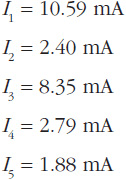
It’s “mission critical” that all test points not undergoing current measurement be shorted out with jumpers. Otherwise, your network will be incomplete and your current measurements will come out wrong. After you’ve finished making measurements, remove all the jumpers to conserve battery energy.
Now you can input your numbers to the Kirchhoff formulas and see how close the sum of the input currents comes to the sum of the output currents. Here are my results for the sum of the currents entering the branch point:

When I added the currents leaving the branch point, I got
![]()
Tip
When you do experiments of this sort, you should expect a slight discrepancy. That principle explains the 0.03 mA current difference in the branch points in my test. An error of three hundredths of a milliampere at 13 mA amounts to well under 1 percent, which is acceptable.
Now compare!
Compare the layout diagram (Fig. 6-3) with the schematic diagram (Fig. 6-5) without the meter or jumpers.
Kirchhoff’s voltage law
In this experiment, you’ll construct a network that demonstrates another important DC circuit rule. You’ll need four resistors: one rated at 220 ohms, one rated at 330 ohms, one rated at 470 ohms, and one rated at 680 ohms. You’ll also need four AA cells.
According to Kirchhoff’s second law, the sum of the voltages across the individual components in a series DC circuit, taking polarity into account, always equals zero. We can also call this rule Kirchhoff’s voltage law or the principle of conservation of voltage.
Consider the generic series DC circuit shown in Fig. 6-6. According to Kirchhoff’s voltage law, the battery voltage E must equal the sum of the potential differences (voltages) across the resistors, although the polarity will be reversed. Mathematically, we can state this fact as
![]()
FIG. 6-6. According to Kirchhoff’s voltage law, the sum of the voltages across the resistances in a series DC circuit is equal and opposite to the battery voltage. If we disregard polarity, then in this example, we’ll observe that E = E1 + E2 + E3 + E4.
If we measure the voltages across the individual resistors and the battery, one at a time, with a DC voltmeter and disregard the polarity, we should find that
![]()
Check each of the four resistors with your ohmmeter to verify their actual values. Mount the resistors in the upper right-hand corner of your breadboard by wire-wrapping the leads around nails, as shown in Fig. 6-7. Connect the battery to the network as shown, and measure the voltage across each resistor. Figure 6-8 illustrates the actual values of the resistors in my network (yours will be slightly different), along with the voltage I got for E2. I measured E = 6.30 V across the battery when it was connected to the resistors.
FIG. 6-7. Suggested arrangement of resistors on breadboard for demonstration of Kirchhoff’s voltage law. All resistance values are in ohms. Solid dots indicate terminals. Dashed lines indicate jumpers.
FIG. 6-8. Network for verifying Kirchhoff’s voltage law. All resistance values are in ohms. The battery voltage E, the voltage across the second resistor, and the resistances are the values I measured.
As you measure each voltage E1 through E4, the black meter probe should go to the more negative voltage point, and the red probe should go to the more positive point. That way, you’ll avoid getting negative readings that might throw off your calculations. When I measured the voltages across the individual resistors, I got
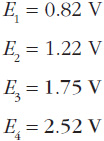
When you’ve finished making your measurements, remove one of the jumpers to take the load off the battery.
After you’ve double-checked and written down your voltage measurements, input the numbers to the modified Kirchhoff formula
![]()
and see how closely it works out. For the left-hand side of this equation, I measured
![]()
In the right-hand side of the foregoing equation, I added my numbers to get
![]()
That’s an error of only 0.01 V out of a net potential difference of 6.30 V, amounting to less than two-tenths of one percent error.
Now compare!
Compare the layout diagram (Fig. 6-7) with the schematic diagram (Fig. 6-8), and “follow the flow” through both versions.
A resistive voltage divider
You can use the components from the previous experiment to obtain several different voltages from a single battery. Keep the resistors on the breadboard in the same arrangement as you had them in the experiment for Kirchhoff’s voltage law.
When you connect two or more resistors in series with a DC power source, those resistors produce specific voltage ratios. You can tailor these ratios using specific resistances that “fix” the intermediate voltages. This type of circuit works best when the resistance values are fairly small. Figure 6-9 illustrates the principle of a resistive voltage divider. The individual resistances are R1, R2, R3, ..., and Rn. The total resistance R is the sum
FIG. 6-9. A voltage divider takes advantage of the potential differences across individual resistors connected in series with a DC power source. Note the use of italics and subscripts for the resistor designators!
![]()
If we call the power supply voltage E, then Ohm’s law tells us that the current I at any point in the circuit must be
![]()
as long as we express I in amperes, E in volts, and R in ohms. At the points P1, P2, P3, ..., and Pn, the voltages relative to the negative battery terminal are E1, E2, E3, ..., and En, respectively. The last (and highest) voltage En is the same as the battery voltage E. The voltages at the various points increase according to the sum total of the resistances up to each point, in proportion to the total resistance, multiplied by the supply voltage. In theory, then, we should find that the following equations hold true:
Tip
Note the use of italics and subscripts for the resistor designators here! Instead of R1, R2, R3, and so on, we now write R1, R2, R3, and so on. This alternative notation hasn’t appeared previously in this book, but lots of engineers use it in schematics. Don’t get surprised when you encounter it. This notation is commonly used for capacitors, inductors, diodes, and other components as well.
During this experiment, I measured E = 6.30 V across the battery as it worked under load, as shown in Fig. 6-10A. This diagram shows the rated values of the resistors. Your actual values will differ slightly from the rated values. In my case, the actual values were
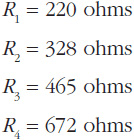
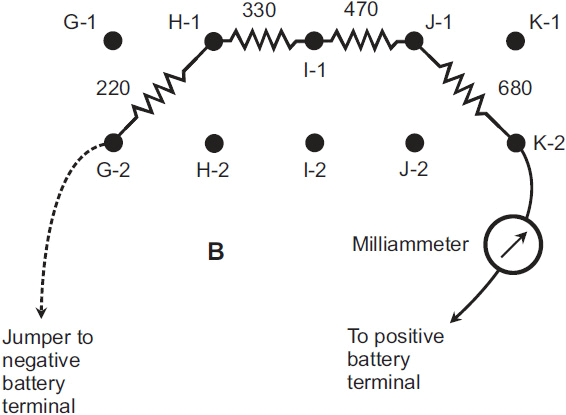
FIG. 6-10. At A, arrangement for measuring voltages in a resistive divider. Here, the voltmeter is connected to measure the voltage E2 across the first and second resistors. All resistance values are in ohms. Solid dots indicate terminals. Dashed lines indicate jumpers. At B, arrangement for measurement of current through the network.
Set your meter to measure current in milliamperes (mA). Connect the battery to the resistive network through the meter, as shown in Fig. 6-10B, and measure the current. In theory, I expected the milliammeter to indicate a value equal to the battery voltage divided by the sum of the actual resistances, or
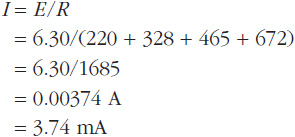
When I measured the current, I got 3.73 mA, a value comfortably within the limits of acceptable error.
Now measure the intermediate voltages E1 through E4 with your meter set for a moderate DC voltage range. The black meter probe should go directly to the negative battery terminal and stay there. The red meter probe should go to each positive voltage point in turn. First measure the voltage E1 that appears across R1 only. Then measure, in order, the following voltages, as illustrated in the schematic of Fig. 6-11:
FIG. 6-11. Network for testing the operation of a resistive voltage divider. All resistance values are in ohms. The battery voltage E, the voltage E2 across the first and second resistors, and the resistance values represent my measurements.
• The potential difference E2 across ![]()
• The potential difference E3 across ![]()
• The potential difference E4 across ![]()
Figure 6-11 illustrates the arrangement for measuring E2 to provide a specific example. When I measured each voltage in turn, my meter displayed these results:
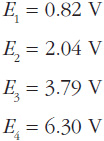
After you’ve finished measuring all the voltages, remove one of the jumpers to conserve battery energy.
Now connect the meter across the combination R1 + R2. Run a couple of jumper wires to a load resistor located elsewhere on the breadboard, as shown in the layout diagram of Fig. 6-12. This arrangement will make the voltage source E2 force current through the load resistor, which we’ll call RL. Try every resistor in your repertoire in the place of RL. If you obtained all the resistors in the parts list, you’ll have seven tests to do, using resistors rated at values ranging from 220 to 3300 ohms.
FIG. 6-12. Circuit for testing a resistive voltage divider under load. Dashed lines indicate jumpers. This diagram shows the arrangement for measuring variations in E2 as the load resistance RL is alternately connected and disconnected from the series combination of R1 and R2.
Alternately connect and disconnect one of the jumper wires between the voltage divider and RL, so that you can observe the effect of the load on E2. As you can see, the external load affects the behavior of the voltage divider. As RL decreases, so does E2. The effect becomes dramatic when RL becomes small, representing a “heavy load.” Table 6-2 shows the results I got. Plot your results as points on a coordinate grid with RL on the horizontal axis and E2 on the vertical axis, and then “connect the dots” to get a characteristic curve showing the voltage as a function of the load resistance. Figure 6-13 is the graph I made. I used a reverse logarithmic scale to portray RL, so that the values would be reasonably spread out. This graph scale allows for a graph that provides a clear picture of what happens as the conductance of the load increases.
Table 6-2
Here are the voltages that I measured across various loads in a resistive voltage divider constructed according to Fig. 6-12. My network resistor values were R1 = 220 ohms, R2 = 328 ohms, R3 = 465 ohms, and R4 = 672 ohms. The load resistance values (left column) are the actual measured values for components rated at 3300, 1500, 1000, 680, 470, 330, and 220 ohms, respectively as you read down.
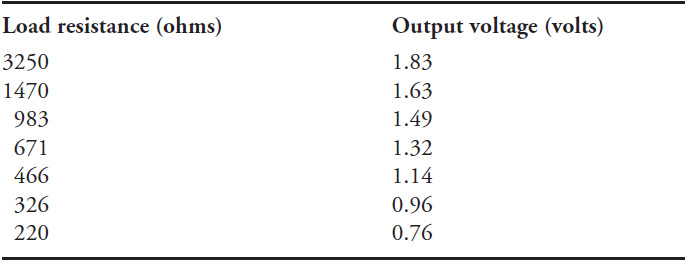
FIG. 6-13. My results for output voltage versus load resistance in the voltage divider. The dashed line shows the open-circuit (no-load) voltage across the combination of R1 and R2 in series. Open circles show the measured voltages under various loads. The solid curve reveals how the circuit behaves as the load resistance goes down.
What do you think will happen to the voltage across the load if you use two, three, four, or five 220-ohm resistors in parallel, getting RL values of about 110, 73, 55, and 44 ohms respectively? Try the arrangements one by one, and see what happens! Your original package from Radio Shack has five 220-ohm resistors in it, right?
Tip
The results of this experiment suggest that when engineers build voltage dividers, they had better know what sort of external load the circuit will have to deal with. If the load resistance fluctuates greatly, especially if it sometimes gets low, a resistive voltage divider won’t work very well.
A diode-based voltage reducer
Rectifier diodes can reduce the output voltage of a low-voltage DC battery or power supply, providing a better (or at least more predictable) way to obtain specific desired voltages than the resistive divider can do. For this experiment, you’ll need two diodes. The ones I obtained were rated at 1 A and 600 peak inverse volts (PIV), available at Radio Shack stores as part number 276-1104. You’ll also need at least one of each of the resistors listed in Table 6-1, along with some jumpers.
Figure 6-14 shows the schematic symbol for a simple rectifier diode, which is manufactured by joining a piece of P-type semiconductor material to a piece of N-type material. The N-type semiconductor, represented by the short, straight line, forms the diode’s cathode. The P-type semiconductor, represented by the arrow, composes the anode. Under most conditions, electrons can travel easily from the cathode to the anode (in the direction opposite the arrow), but not from the anode to the cathode (in the direction of the arrow). Conventional current, which always goes from positive to negative, moves in the same direction as the arrow points.
FIG. 6-14. Schematic symbol for a semiconductor diode. The short line represents the cathode. The arrow represents the anode.
If you connect a battery and a resistor in series with a diode, current will flow if the negative terminal of the battery faces the cathode and the positive terminal faces the anode, as shown in Fig. 6-15A. This condition is called forward bias. No current will flow if the battery is reversed, as shown in Fig. 6-15B (except when the voltage is very high). This condition is called reverse bias. The resistor prevents destruction of the diode by excessive current under conditions of forward bias.
FIG. 6-15. Series connection of a battery, a resistor, a current meter, and a diode. At A, forward bias causes current to flow if the voltage equals or exceeds the forward breakover threshold. At B, reverse bias results in no current through the diode, unless the voltage gets very high.
It takes a certain minimum voltage to cause current to flow through a forward-biased semiconductor diode. Engineers call this “threshold” the forward breaker voltage. In most diodes, it’s a fraction of a volt, but it varies somewhat depending on how much current the diode is forced to carry. If the forward-bias voltage across the diode’s P-N junction is not at least as great as the forward breaker voltage, then the diode will not conduct. When a diode is forward-biased and connected in series with a battery, the voltage goes down to an extent approximately equal to the forward breakover voltage. Unlike the voltage reduction that takes place with resistors, the diode’s voltage-dropping capability does not change much when the external load resistance goes up or down.
Although current won’t normally flow through a diode that’s reverse-biased, exceptions do occur. If the reverse voltage gets high enough (usually far greater than the forward breakover value), a diode will conduct current because of the so-called avalanche effect. Zener diodes, which are used to regulate voltages in power supplies, work according to this principle.
Did you know?
When you connect two or more identical rectifier diodes in series with their polarities in agreement, the forward-breakover voltages add up (give or take a little), so you can get stable and predictable voltage drops that come quite close to whole-number multiples of the forward breakover voltage of a single diode. This technique works as long as you connect a load in the circuit, so that the diodes are forced to carry some current.
You can set up a voltage reducer with two diodes in series and their polarities in agreement, as shown in Fig. 6-16, so that current flows through the load resistor RL if the forward bias is large enough. Figure 6-17 is a pictorial layout diagram showing an arrangement for mounting the components on your breadboard. Set your meter to indicate DC voltage in a moderate range, such as 0 to 20 V. Connect the meter across the load resistance, paying attention to the polarity so you get positive voltage readings. As you did in the previous experiment, try every resistor you have for RL. Measure the voltage across RL in each case. You’ll have seven tests to do, with resistances ranging from 220 to 3300 ohms.
FIG. 6-16. Schematic diagram showing the method of voltage measurement across a load resistance RL in a two-diode voltage reducer.
FIG. 6-17. Suggested breadboard layout for measurements of the voltages across the load resistance in a two-diode voltage reducer. Solid dots show breadboard terminals. Dashed lines indicate jumpers. Pay attention to the diode polarity! The cathodes should go toward the negative battery terminal.
The load resistance RL affects the behavior of a diode-based voltage reducer, but in a different way than it affects the behavior of a resistive voltage divider. When you do these tests, you’ll see that as the load resistance RL decreases, the potential difference across it goes down, but only a little bit. The voltage across the load tends to drop more and more slowly as RL decreases. Contrast this behavior with that of the resistive divider, in which the voltage drops off more and more rapidly as the load resistance goes down. Table 6-3 shows the results I got when I measured the voltages across various load resistances with this two-diode arrangement.
Table 6-3
Here are the output voltages that I obtained with various loads connected to a diode-based voltage reducer. The circuit consisted of two diodes rated at 1 A and 600 PIV, forward-biased and placed in series with a 6.30-V battery.
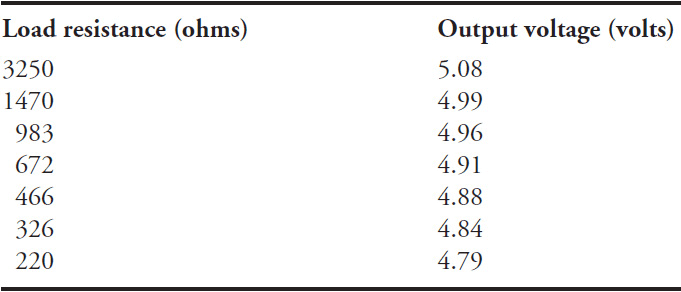
Plot your results as points on a coordinate grid with the load resistance on the horizontal axis and the voltage across the load resistor on the vertical axis, and then approximate the curve as you did in the previous experiment. When I did this little exercise, I got the graph shown in Fig. 6-18. As before, I used a reverse logarithmic scale to portray RL. Compare this graph with Fig. 6-13 from the previous experiment.
FIG. 6-18. Output voltage versus load resistance for the diode-based voltage reducer. These are my results. The dashed line shows the open-circuit (no-load) voltage. Open circles show measured voltages under various loads. The solid curve approximates the circuit’s characteristic function.
Here’s a thought!
Repeat this experiment with only one diode. Then, if you’re willing to make another trip to Radio Shack, get another package of diodes and try the experiment with three or four of them in series. You might also obtain some more resistors, covering a range of values of, say, 100 ohms to 100,000 ohms, and test the circuit using those resistors in the place of RL.
Caution!
Don’t use a resistor of less than about 75 ohms as the load here. In this arrangement, a 1/2-watt resistor of less than 75 ohms will let too much current flow, risking destruction of the resistor (and possibly the diodes as well, if you make the resistance really low).
Mismatched lamps in series
When two dissimilar incandescent lamps operate in series, they receive different voltages and consume different amounts of volt-ampere (VA) power, as this experiment demonstrates. (Remember from your basic electricity courses that in a DC circuit, power in watts equals voltage in volts times current in amperes, hence the term volt-ampere for simple DC power.) You’ll need a 6.3-V lamp, a 7.5-V lamp, four AA cells, and some jumpers.
Your breadboard has two screw-base lamp holders. Position the board so that one holder lies on the left, and the other one lies to its right. Install a 6.3-V lamp in the left-hand socket, and a 7.5-V lamp in the right-hand socket. Connect a short length of bare wire securely between terminals D1 and D2, so that the top terminal of the left-hand lamp holder goes to the bottom terminal of the right-hand lamp holder. Then connect jumpers between the free lamp socket terminals and the battery terminals, so that the lamps are connected in series with each other. Both lamps should glow at partial brilliance.
Call the lamp that’s closer to the negative battery terminal “lamp N.” That will be the one on the left. Call the lamp that’s closer to the positive battery terminal “lamp P.” That’ll be the one on the right. Unscrew lamp N. At the instant the contact fails, lamp P will go dark. Screw lamp N back in, and then unscrew lamp P. Lamp N will go out. This phenomenon is typical of the behavior of a series circuit. If any component opens up, all the others lose power. A break at any point in a series circuit prevents current from flowing anywhere in that circuit.
Now short out lamp N with a jumper. Lamp N will go dark because it no longer has any voltage across it; lamp P will attain nearly full brilliance. Then disconnect the jumper from lamp N, and move the jumper so that it shorts out lamp P instead. Lamp P will go dark while lamp N glows at full brilliance. Again, this behavior is typical of series circuits. If any component shorts out, all of the others receive more power than they did before.
Set your meter to read DC volts. Connect the jumpers so that the lamps are in series and are both glowing at partial brilliance. Measure the voltage E1 across lamp N, as shown in the schematic of Fig. 6-19 and in the equivalent layout pictorial of Fig. 6-20. Then measure the voltage E2 across lamp P, as shown in the schematic of Fig. 6-21 and the equivalent layout pictorial of Fig. 6-22. When I performed these tests, I got the following voltages:

FIG. 6-19. Measurement of voltage E1 across the more negative of two dissimilar lamps in series (called N, rated at 6.3 V).
FIG. 6-20. Breadboard layout rendition of the schematic shown in Fig. 6-19.
FIG. 6-22. Breadboard layout rendition of the schematic shown in Fig. 6-21.
If you can’t get the exact same Radio Shack lamps as specified in the parts list for these experiments (Table 6-1), you can use lamps from another source, such as a hardware store or hobby store. This experiment will work as long as the lamps are rated for slightly different voltages or slightly different power levels, and both are rated between 6 V and 12 V.
Now determine the voltage E across the series combination of lamps, as shown in the schematic at Fig. 6-23 and the layout in Fig. 6-24. In theory, the reading should be
![]()
FIG. 6-24. Breadboard layout rendition of the schematic shown in Fig. 6-23.
When I put my numerical results into this formula, I predicted that I would see

My meter reading was E = 5.85 V, a value significantly lower than the 6.30 V I started out with under no-load conditions. Evidently, these bulbs “tax” the four-AA-cell battery rather heavily. I also entertained the notion that because I’d been using the battery for a lot of other experiments besides the ones described here, my AA cells might have grown a little weak.
Set your meter for DC milliamperes, and connect it, as shown in the schematic diagram of Fig. 6-25 and in the equivalent layout pictorial of Fig. 6-26. That connection will allow you to measure the current drawn by the series combination of lamps. I obtained a reading of 139 mA (or 0.139 A).
FIG. 6-26. Breadboard layout rendition of the schematic shown in Fig. 6-25.
Now that you know the voltage across each lamp and the current going through the whole circuit, you can determine the VA power figures for the lamps individually and together. Let PVA 1 represent the VA power consumed by lamp N, and use the formula
![]()
When I plugged in my results, I got
![]()
Letting PVA2 represent the VA power consumed by lamp P, the formula is
![]()
My result turned out as

Now let’s say that PVA represents the VA power consumed by both lamps operating together. In that case, theory predicts that
![]()
Plugging in my experimental results gave me
![]()
In theory, the VA power consumed by the lamp combination should also work out as the sum of the two VA power quantities taken individually:
![]()
Adding my results of PVA 1 = 0.306 and PVA 2 = 0.506, I got

The error between my two results was a small fraction of one percent, a state of affairs that made me joyful indeed.
Summary and conclusion
When you want to design, build, debug, and troubleshoot electronic equipment, you’ll do best if you have a good schematic (or set of schematics) to work with. Pictorial diagrams, including layouts, can help you find your way too. But when it comes down to doing the work, you’ll never find any substitute for playing around with real-world hardware. If you have both schematic and pictorial diagrams available, your job will be as easy as it can get.
If you did all the experiments in this chapter, you probably came up with results that differ slightly from mine. If you had to make major parts substitutions, for example with the lamps in the last experiment, then some of your results doubtless came out a lot different than mine did. Whether you did the experiments or merely followed along as a spectator, you got a chance to see how schematics, layout diagrams, literal pictorials, graphs, and tables can work together! All of these tools belong in an engineer’s knowledge base.
Again, I’d like to make a “plug” for Electricity Experiments You Can Do at Home. You’ll get some good hands-on lab experience, combined with some theory and some rather strange phenomena, from that book. If you want a more theoretical and exhaustive presentation of electricity and electronics, with plenty of schematics and just enough mathematics to keep a true geek from getting bored, I recommend the latest edition of Teach Yourself Electricity and Electronics. Both books are published by McGraw-Hill, and you can find them at all major book retailers.


